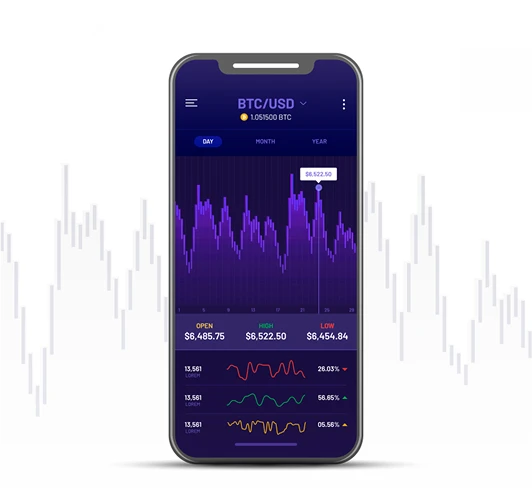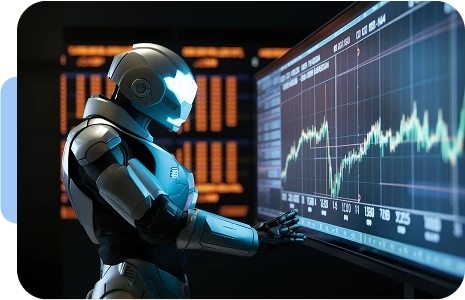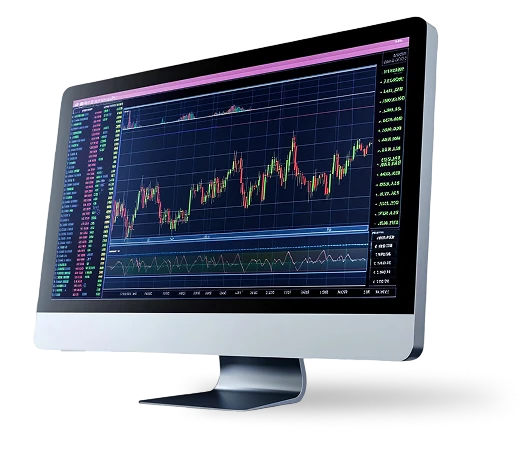CoinSpire Ai offers an improved cryptocurrency trading process by providing the latest tools. It brings AI precision and speed to match the volatile world of crypto. CoinSpire Ai users can also mirror seasoned traders with the copy-trading feature.
CoinSpire Ai uses AI technology to give traders market insights. It also uses AI to make objective trading decisions. The website allows people to trade and invest in different cryptocurrencies 24/7.
To access the full CoinSpire Ai package, people should register on the website. Prospective crypto traders should create accounts on CoinSpire Ai by submitting their names, email addresses, and phone numbers. After this, the website will give them access to next-level trading tools.

CoinSpire Ai offers full assistance to crypto traders and investors to brave the market. Regardless of trading preference, the website ensures that its AI technology analyzes different markets and provides real-time insights. Create an account to enjoy the pros of trading with CoinSpire Ai.

The platform analyzes economic indicators and market trends. It also identifies the performance of each asset/cryptocurrency. This helps people make informed trading decisions. It helps people select trades that match their risk tolerance and financial goals. Register on CoinSpire Ai to gain market insights.

Take out the guesswork from crypto trading and make objective decisions through CoinSpire Ai’s AI bot. Follow economic updates, expert opinions, and trading developments by using the platform. Users can also test new trading models and compare their results with those of old models. Start making key trading decisions by signing up on CoinSpire Ai.
CoinSpire Ai is open to all traders 24/7. People can create their trading accounts, demo-trade, or trade live. New traders can use demo accounts to build their skills, while experienced traders can use them to test new strategies. Sign up to start trading on CoinSpire Ai.

With CoinSpire Ai, people can trade different cryptocurrencies in several markets and exchanges. Traders can own a portfolio of assets and fund their accounts. They can also convert their coins into preferred fiat currencies. Register on CoinSpire Ai to access multiple markets.
Learn from professional traders and replicate their strategies and skills. Discover how they react to different market conditions, risks, and volatilities. Combine these human abilities with AI efficiency to enhance the trading experience. Want to copy trades from professional traders? Register on CoinSpire Ai.
Enjoy the numerous pros CoinSpire Ai provides by signing up for free. Registration is fast and requires no technical skills. To sign up, people should input their names, email addresses, and phone numbers in the registration form. Use CoinSpire Ai for a seamless crypto trading experience.
This is a digital currency secured with cryptography. It can be traded, invested, and used as a payment method. Common cryptocurrency examples are Bitcoin, Ethereum, USDT, Solana, and Litecoin. When traded or invested, their values can be significantly affected by market conditions, risks, and volatilities. CoinSpire Ai helps people manage these risks by providing AI trading features for in-depth insights and speed.
CoinSpire Ai allows people to buy, sell, and exchange cryptocurrencies. Traders can buy coins with or sell them to get fiat currencies. Crypto trading uses different methods, which include futures, spot, staking, yield farming, and margin. Start trading crypto with modern solutions on CoinSpire Ai.
When people register on CoinSpire Ai, they can buy cryptocurrencies and hold them long-term despite short-term fluctuations. Crypto investors can also invest through crypto funds/ETFs (Exchange-Traded Funds) and liquidity pools. Want to become a crypto investor? Sign up on CoinSpire Ai.
A crypto wallet stores people’s crypto accounts’ passkeys and addresses. It is compatible with all devices. It is often protected, as it is a high target for cybercriminals. Register on CoinSpire Ai to start trading from a suitable crypto wallet.
This is an online platform where people exchange cryptocurrencies. It functions like a broker, providing traders and investors the tools to buy, sell, and exchange. CoinSpire Ai helps people exchange their coins legitimately and securely.
A crypto exchange can be centralized, decentralized, or hybrid. A centralized exchange acts as an intermediary for traders. It is audited regularly and stores clients’ funds and passkeys with banks and custodians. By using this exchange, investors may be safe from fake exchanges. They may also enjoy insured protection and high liquidity. Yet, the exchange is easily accessible to hackers.
A decentralized exchange is blockchain-based, and it connects people to make peer-to-peer trades. There are no third parties except those who develop, host, and secure the platform. A crypto wallet is a major requirement for trading on this exchange. While the exchange is more secure, it has low liquidity.
A hybrid exchange combines the features of centralized and decentralized exchanges. It offers the benefit of both exchanges but is still a new concept. Before choosing an exchange, people should check its registration status as a broker. People should also confirm the exchange’s wallet. It could be a sign of fraud or illegitimacy if the wallet hides the information.

The crypto wallet is used for transactions, connection to decentralized apps (dApps), and crypto management. Users should select software wallet app providers based on the features they offer. Then, they can download the wallets and create their accounts.
Setting up an account requires submitting a name, email address, and password. Some wallets might request an identification verification process, which involves uploading a selfie or government-issued ID. The final step is transferring assets into the wallet. People can do this by exchanging cryptocurrencies, getting cryptocurrencies from another wallet, or depositing funds from a bank account. CoinSpire Ai discusses wallet types below:
This stores private keys offline. It has physical and digital features. To use the wallet, users should connect it to the interface on their device via Bluetooth or cable. They can initiate a transaction and sign or reject its conditions. After approving and confirming (with two-factor authentication) the transaction, the wallet uses the private key in its computer chip to sign the transaction offline. The wallet sends the signed transaction to the device hosting its interface. Then, the device sends the transaction to the blockchain for processing.
This wallet allows traders to hold, send, and receive cryptocurrencies. It interacts with blockchains through a graphical user interface (GUI). It is usually custodial. That is, cryptocurrencies are in the custody of a central authority or third party. Some also support non-custodial decentralized exchanges that facilitate trades with atomic swaps or automated market makers.
This is a piece of paper with QR codes, private/public keys, and seed phrases printed on it. It is generated offline after downloading a wallet app. The wallet is cost-effective. It also gives traders enhanced privacy and fund control. On the other hand, it makes funds difficult to access. It is prone to human error and can cause permanent fund loss.
A web wallet holds transaction keys on a web app or website. The wallet is accessible from anywhere and is suitable for quick payments. Yet, it only supports Ethereum, Bitcoin, and Bitcoin Cash. Also, it stands the risk of hacking, phishing, and virus attacks. Some web wallets are MyEtherWallet and the Coinbase wallet.

Bitcoin mining means entering a transaction on the blockchain. Miners use hardware and software to generate cryptographic numbers. The numbers could be less than or equal to the number the Bitcoin network’s difficulty algorithm sets. Bitcoin miners get rewards for creating new blocks in the blockchain.
The reward is determined by the Bitcoin price, electricity cost, hash rate, and mining device cost. It is reduced by half every four years. In 2009, people mined Bitcoin for 50 BTC, but it became 25 BTC in 2012. It became 12.5 BTC in 2016, 6.25 BTC in 2020, and 3.125 BTC in 2024.
Bitcoin mining is done through graphic processing units (GPUs), cloud, central processing unit (CPU), and application-specific integrated circuits (ASIC). It also requires pool membership and a low-cost power supply. Miners must be wary of fake wallets, exchanges, and cloud mining platforms.
Layer 1 network acts as a blockchain infrastructure on which networks, applications, and protocols are built. Its components include block production, cryptography, data structure, cryptocurrencies, and transaction finality. Validators create blocks on the network, while it uses cryptography for security. Data is stored on the network as a ledger and made publicly accessible. The network uses cryptocurrencies/native assets instead of a fiat currency because it lowers transaction fees.
Transaction finality ensures that a transaction cannot be reversed after initiation. Layer 1 blockchain is decentralized, secure, and has privacy features. Examples are Bitcoin, Ethereum, Algorand, Harmony, and Celo. Layer 2 blockchain provides extra functionalities to Layer 1. It improves Layer 1’s deficiency regarding processing time, transaction throughput, and fees. Its features include rollups, side chains, state channels, and nested blockchains.
Rollups bundle several transaction data to submit to the mainnet. Side chains are independent blockchains and validators. State channels enhance blockchain interactions. An example is the interaction between the Ethereum Raiden Network and Bitcoin’s Lightning Network. Nested blockchains are different secondary blockchains on a main chain. Layer 2 reduces transaction fees and is secure but increases centralization risks.

A block is a part of the blockchain that stores cryptocurrency transaction data. It links to other blocks in the chain. It is used in other applications like smart contracts and digital identity management. People can use an average of 10 minutes to create a Bitcoin block and seconds to create an Ethereum block. The two main parts of a block are the header and the body. The header carries important information, while the body lists all transactions.
A block is approved and added to the blockchain through proof of work (PoW) and proof of stake (PoS). For Bitcoin and other PoW systems, the header contains the system version in use and a link to a previous page through a hash. It also contains a timestamp (of when the page was created), technical details about page creation difficulty, and a nonce (that shows that work was done to create the page).
The header in Ethereum and other PoS systems contains the used version, a link to a previous block, a timestamp, validators, and validators’ signatures. The blocks on a public blockchain are open to everyone. On the contrary, only authenticated users can access the blocks on a private blockchain.

To better understand cryptocurrencies, CoinSpire Ai will outline some terms. These include the lightning network, PoW, PoS, non-fungible token (NFT), fiat currency, and stablecoin. The lightning network is a layer two solution built on the Bitcoin blockchain to make transactions faster. It reduces high energy costs and ensures people receive their payments without hitches. Yet, it is vulnerable to hacks and closed-channel fraud. It also attracts transaction fees.
PoW is a verification mechanism for crypto transactions. It is decentralized and secure. Bitcoin, Bitcoin Cash, Litecoin, and Dogecoin use this process. Also, transaction fees are assigned to miners as rewards for solving cryptographic puzzles. On the contrary, it uses high energy and requires expensive equipment for mining. It is inefficient due to expensive fees and slow transaction processing.
PoS is a consensus mechanism that validates cryptocurrency transactions. It is more scalable than PoW, gives staking rewards for validating transactions, and consumes less energy. People must own coins or tokens to become validators (instead of buying energy or equipment in PoW). Solana, Cardano, Polkadot, and Ethereum 2.0 use this mechanism.
This is a unique digital asset on a blockchain. Its uniqueness makes it impossible to exchange or replicate another NFT. Unlike cryptocurrencies, an NFT cannot serve as a store of value or a means of exchange. Instead, it maintains its uniqueness through scarcity. NFT examples are intellectual property rights, gaming assets, digital art and collectibles, and music.
This is a government-issued currency declared as legal tender but not commodity-backed. Traders can buy cryptocurrencies with fiat currencies. Central banks control the currency through reserve requirements, quantitative easing, open market operations, and interest rates. This happens to promote economic growth, maintain the employment rate, and control inflation.
This cryptocurrency’s value is attached to that of a fiat currency. Its four categories are fiat- collateralized, non-collateralized, commodity-backed, and crypto-backed. USDC, TrueUSD, and Tether are examples of stablecoins. A stablecoin is used for cross-border transactions/remittances and payments/peer-to-peer transactions. It also facilitates borrowing, lending, and yield farming in the DeFi (Decentralized Finance) market.
This altcoin is created after internet memes, fun topics, pop culture, or trends. People can trade it and use it for speculative investment or peer-to-peer payments. Some meme coin themes are PolitiFi, dog, cat, frog, Elon Musk, and Solana.
Meme coin examples are Dogwifhat, Shiba Inu, Doland Trump, and Jeo Boden. These coins allow traders to seek gains from different small trades. They also cost less than cryptocurrencies and have millions that traders can choose from. On the contrary, it is highly volatile, risky, and has low liquidity.
| 🤖 Cost of Registration | No cost involved for joining |
| 💰 Charges | Services provided without fees |
| 📋 Registration Details | Easy and fast to get started |
| 📊 Focus of Learning | Knowledge on Cryptocurrencies, Foreign Exchange, and Diverse Investments |
| 🌎 Service Availability | Offered in the majority of countries, USA excluded |